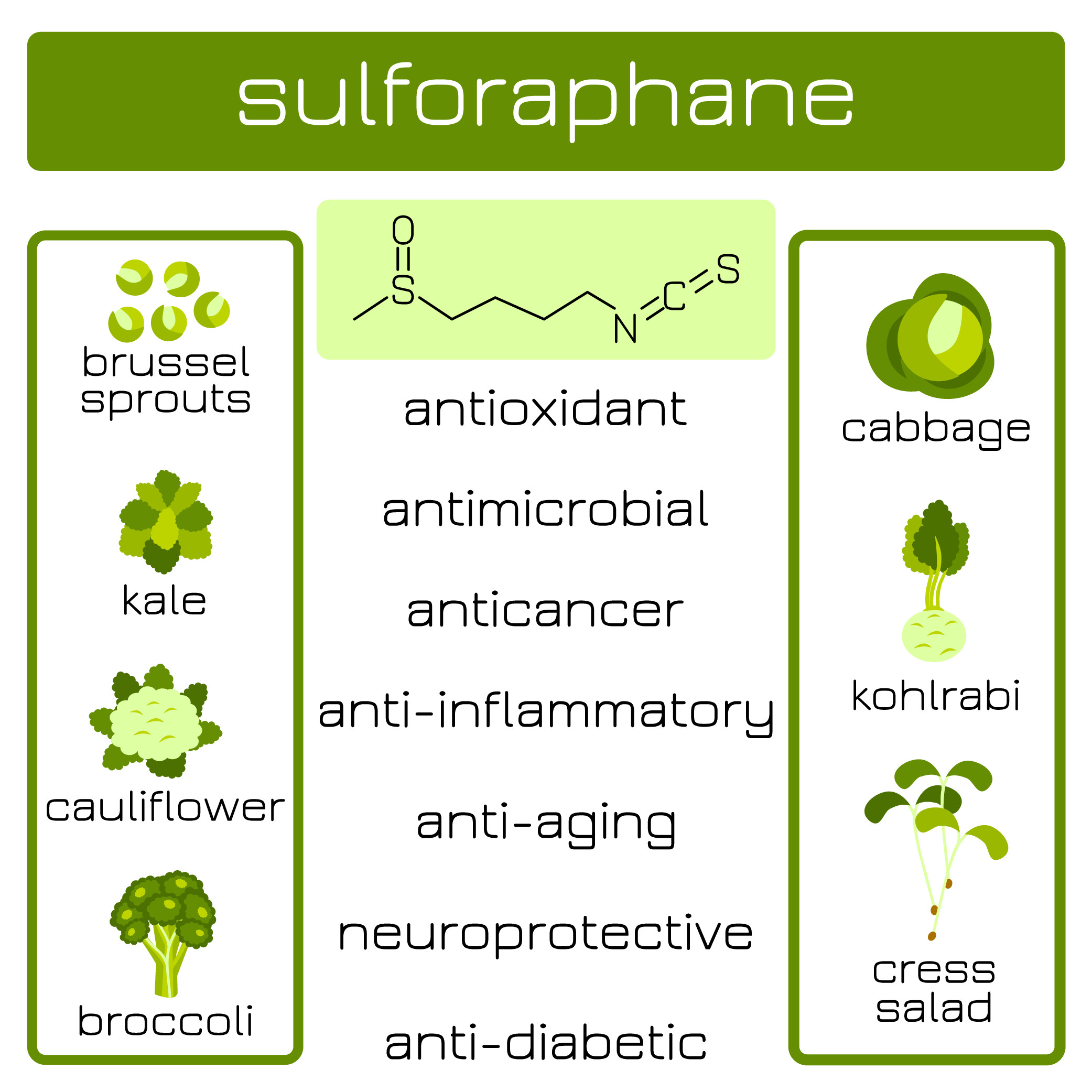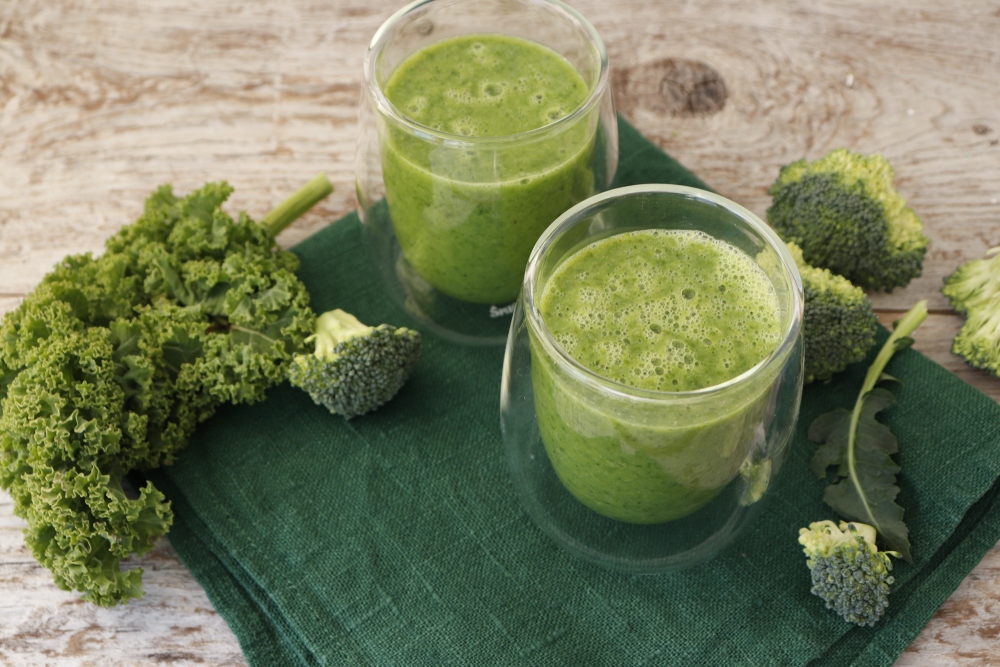When brain foods come to mind, broccoli might not be the first food you’ll think of.
However, a powerful protective plant chemical—sulforaphane, which is derived from broccoli and other cruciferous vegetables, provides crucial antioxidant and anti-inflammatory benefits to both the body and brain via the activation of the antioxidant response element (ARE)—a vital pathway that modulates expression of antioxidant and detoxification genes.
Similarly, sulforaphane binds to the Aryl Hydrocarbon Receptor (AhR), which also stimulates the expression of genes linked to antioxidant and detoxification responses.
Additionally, two studies (2017, 2018) respectively showed that sulforaphane increased levels of a growth factor (BDNF) that is a component in neurogenesis, and augmented pathways that supported the degradation of beta-amyloid and tau protein aggregates. (1,2)
Not familiar with BDNF? My article on BDNF can be accessed here at TheAlzheimersSolution.com.
Cruciferous vegetables are indeed a top brain food and apart from their sulforaphane enrichment, this diverse family of vegetables that includes leafy greens such as kale, spinach, collard greens, arugula and other herbs and greens, are rich in folate, minerals, vitamin K, C, and E that are essential nutrients for heart and brain health.

One caveat on cruciferous veggies. This family of vegetables are also known to be goitrogenic.
A goitrogen is a chemical, drug, or food-derived compound that potentially may impair thyroid hormone production by inhibiting iodine uptake or the ability of iodine to bind to the thyroid gland.
Generally, goitrogens are more significant in the presence of iodine deficiency or low thyroid gland function and inadequate thyroid hormone production
(hypothyroidism).
A number of factors will determine both the amount of sulforaphane and similar compounds (isothiocyanates), and goitrogens that may be released from cruciferous vegetables.
Eating raw cruciferous vegetables—especially broccoli sprouts, or cooking at low temperatures for a short period of time such as steaming or poaching for 1 to 3 minutes will yield the most isothiocyanates like sulforaphane.
Higher temperature and longer cooking times will result in much lower levels of isothiocyanates.
A small amount of isothiocyantes are also.derived from gut bacteria that produce myrosinase—an enzyme that activates the isothiocyanate compound(s) from its precursor compound-glucosinolate.
Additionally, adding acidic foods such as vinegar, or ground mustard seed to cooked cruciferous veggies will increase isothiocyanate levels.
Mustard seed provides myrosinase which is degraded in higher temperature cooking. Myrosinase is also activated when chewing and cutting into raw cruciferous vegetables.
A good overview of goitrogens in food can be read here.
Ironically, the goitrogenic flavanoids (isoflavones)—genistein and daidzein—found in soy and other foods, are particularly beneficial in the protection against several age-related diseases such as osteoporosis, cardiovascular disease, and late-onset Alzheimer’s disease.
Now, there is yet more to the cruciferous vegetable story—namely, kaempferol.
Kaempferol falls into a large class of nutrients termed flavanoids, and more specifically a subclass of flavanoids—flavanols.
In a study published January of 2020, “the highest dietary intake of flavonols were 48% less likely to develop Alzheimer’s dementia than people with the least intake…” (3)
The study titled, “Dietary flavonols and risk of Alzheimer dementia”, included 961 individuals with a mean age of 81.2, and 75% were women.
The study cohort of 961 participants were part of the Rush Memory and Aging Project* (MAP) which sponsored the research.
The study follow up period was 6.9 years.
All the participants were appropriately assessed and deemed dementia-free.
A food questionnaire, a modified version of the Harvard Food Frequency Questionnaire, tracked the intake of four flavanols—kaempferol, quercetin, myricetin, and isorhamnetin.
“The top food item contributors to the individual flavonols in our cohort were:
kale, beans, tea, spinach, and broccoli for kaempferol;
tomatoes, kale, apples, and tea for quercetin;
tea, wine, kale, oranges, and tomatoes for myricetin;
and pears, olive oil, wine, and tomato sauce for isorhamnetin.”
Notably, several of the flavanols were highlighted by the study with regard to the incidence of Alzheimer’s disease and Alzheimer’s dementia.
Higher kaempferol and myricetin intake was each “associated with a reduction in the rate of incident Alzheimer’s disease”.
Lastly, the study authors concluded that “kaempferol and isorhamnetin in particular, may be protective against the development of Alzheimer’s dementia”, and “The associations were independent of many diet and lifestyle factors and cardiovascular-related conditions.”

*The Rush’ Memory and Aging Project is an ongoing study that began more than 20 years ago, and thereafter, I immediately noticed the promising studies on the role of phytonutrients in the prevention of Alzheimer’s and dementia. It was inspiring then and it still continues to fuel my passion for the subject.
Martha Claire Morris, who passed away in 2020, led many of the Rush Memory and Aging Project research which include studies on The MIND Diet.
Bon appetite!
References
1. Sulforaphane epigenetically enhances neuronal BDNF expression and TrkB signaling pathways.
Jisung Kim, Siyoung Lee, Bo-Ryoung Choi, Hee Yang
Mol Nutr Food Res. 2017 Feb; 61(2).
2. Sulforaphane Upregulates the Heat Shock Protein Co-Chaperone CHIP and Clears Amyloid-β and Tau in a Mouse Model of Alzheimer’s Disease
Siyoung Lee, Bo-Ryoung Choi, Jisung Kim, Frank M. LaFerla et al.
Molecular Nutrition & Food Research. April 2018, Volume 62, Issue 12 1800240
3. Dietary flavonols and risk of Alzheimer dementia
Holland T, et al.
Neurology. 2020 April ;94(16):e1749–e1756.
DOI:10.1212/WNL.0000000000008981.





